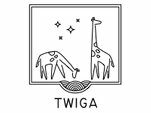Water vapour content of the atmosphere lowest layer (up to about 15 km from the ground), which is known as troposphere or neutral atmosphere, affects GNSS satellite signals propagation velocities, causing delays in their observation from ground-based stations. Based on a proper analysis of such data, one can quantify this delay and therefore have an indirect observation of the water vapour content along the signal travel path.
In recent years, time series of zenith total delays (ZTDs) obtained as by-product of high-accuracy GNSS positioning have started to be assimilated into numerical weather prediction models. Several countries have already established country-wide networks of permanent GNSS stations, typically for precise positioning and surveying purposes. The figure below shows the current distribution of GNSS stations in Africa.

Current distribution of GNSS stations in Africa (source: https://corsmap.com/) 
In the next few months, it will be extended to other African GNSS stations providing real-time data streams, including the TWIGA GNSS networks in Uganda and Kenya.
Written by: Eugenio Realini
GReD

